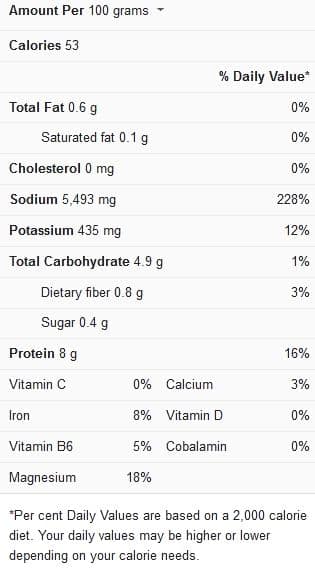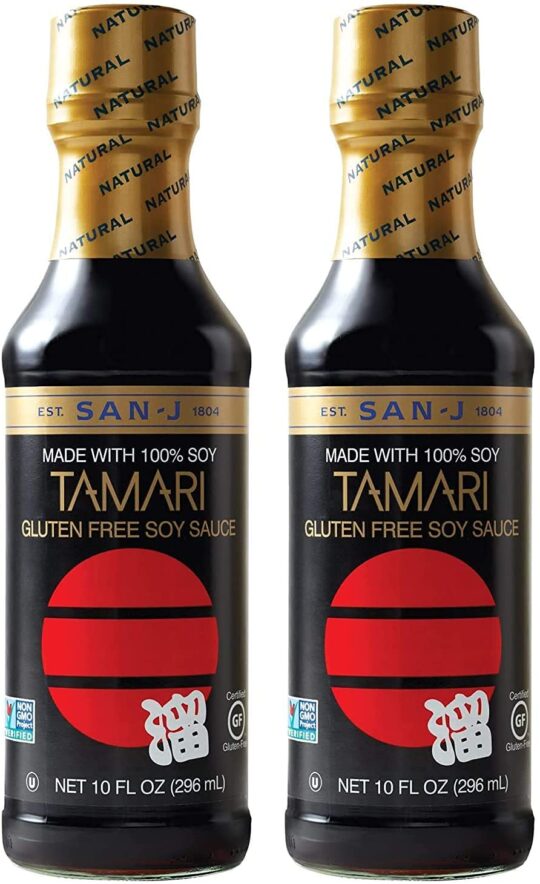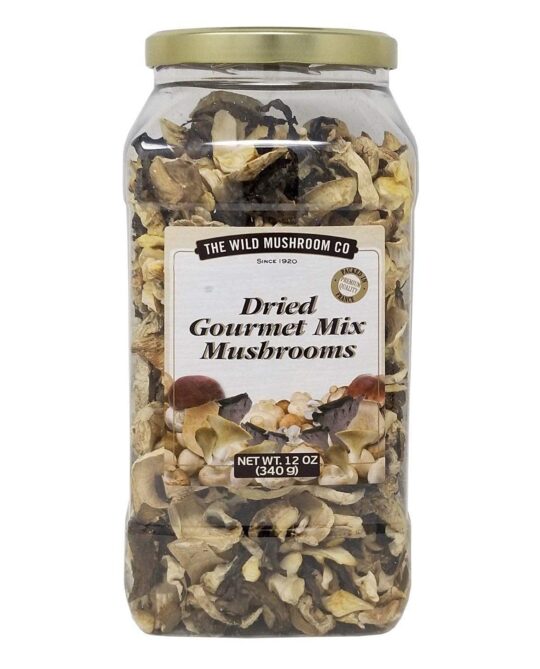Updated on April 9th, 2023
Due to the fact that soy sauce is high in umami and contains a significant amount of salt, it’s the ideal condiment for seasoning just about anything. Overall, soy sauce adds salt, umami, and a bit of sweetness to fried rice meals, making it suited for a wide range of rice recipes.
As with any other ingredient in any cooking procedure, it is possible to run out of soy sauce in the middle of making your favorite fried rice recipe. You may also be craving a different taste in your meal, one that soy sauce may not be able to live up to.
If this is the case, then it’s a great thing that there are a number of suitable replacement options for soy sauce, and these substitutes can also work fine in fried rice recipes. This article will show you these substitutes and the appropriate substitution amounts and methods to adopt to obtain desirable results.
Soy Sauce Nutrition Facts

What is Soy Sauce?
Soy sauce is a liquid ingredient of a salty nature, made traditionally from the fermentation of soybeans and wheat. It is said to have originated from a Chinese product called “Chiang” around 3,000 years ago. Similar food items have since been produced In Japan, Korea, Indonesia, and other Southeast Asian countries.
Soy sauce was first brought to Europe by Dutch and Japanese traders in the 1600s. The word “soy” is derived from the Japanese word “shoyu,” which means “soy sauce.” Soy sauce is the source of the soybean’s name.
Soy sauce is made out of four fundamental ingredients: soybeans, wheat, salt, and fermentation agents like mold or yeast. Soy sauce from different regions may include varied components, resulting in different hues and flavors.
Soy sauce can be incorporated into a wide range of recipes to impart a flavorful umami feel. It is especially delicious in fried rice recipes; soy sauce also works as a table condiment and a flavoring agent for enhancing taste in many other recipes.
Uses of Soy Sauce in Rice recipes
Soy sauce is a versatile ingredient that can be used as a table condiment or a flavor enhancer in foods, added during the cooking process. It is an ingredient derived from fermented soybeans, and the fermentation process imparts a strong umami flavor. Soy sauce has a distinct flavor that cannot be replicated by combining other flavors.
In fried rice recipes, soy sauce fills the rice with an exquisite taste and gives it a non-sticky texture. It also adds a delicate flavor to the dish. Some of the rice recipes in which soy sauce is commonly used include the following:
- Veg fried rice
- Egg and sweet soy sauce fried rice
- Rice with vegetables in soy sauce
- Honey soy fried rice
- Vegetable fried rice in chili-soya sauce
- Cauliflower fried rice
- Chinese soy sauce rice pilaf
- Korean soy and red chili fried rice
- Chinese fried rice
- Shrimp fried rice
- Simple egg fried rice
- Coconut brown rice with soy and honey chicken
- Chicken fried rice
- Hainanese chicken rice
- Fried rice with eggs and tofu
Substitutes for Soy Sauce in Fried rice
Don’t worry if you’re avoiding soy sauce due to dietary restrictions (or simply ran out) and can’t afford to use it in your fried rice recipes. You can simply use other ingredients that are similar.
The following soy sauce alternatives work well in fried rice, but keep in mind that they aren’t exact matches and may alter the flavor of the finished meal.
Tamari

If you don’t have a soy-related allergy and have no cause to watch your sodium intake, tamari is the closest thing to soy sauce in terms of flavor. That’s because it’s manufactured from soybeans and brewed in a similar manner, but it’s gluten-free because it doesn’t include wheat.
If you’re gluten-free, however, check the label because some tamari brands may include trace amounts of wheat. Because tamari is similarly saline, this sauce can be used in place of soy in fried rice recipes in a 1:1 ratio.
Worcestershire Sauce

This is an ingredient of British origin, made up of anchovies, malt vinegar, sugar, spices, garlic, salt, onions, molasses, and tamarind extract, among other things. It possesses a similar umami quality to soy sauce but has lower salt content, with no soy or gluten. If you’re allergic to shellfish or seafood, though, you should avoid it.
Worcestershire sauce is a great alternative for soy sauce in fried rice and can produce comparable results. Because Worcestershire is less salty than soy sauce, it works well in dishes that call for taste rather than saltiness.
Dried Mushrooms

Dried shiitake mushrooms can be used as a soy sauce substitute that is gluten-free, soy-free, and low in salt. Use some water to rehydrate the mushrooms, then use the soaking liquid in place of soy sauce. It’s not the most accurate substitution, but it packs a powerful umami punch that you’ll love in your fried rice.
Dried shiitake mushrooms may be found in most supermarket stores in the mushroom area. Put it to the test in fried rice recipes, and you’ll most likely love the results. Because the flavor is less concentrated, it will work just fine in place of soy sauce.
Frequently Asked Questions (FAQs)
Which soy sauce variety is the best for fried rice?
Fried rice should be made with long-grain white rice or jasmine rice, and it looks fluffy and evenly without clumping. Although low sodium soy sauce is preferable for fried rice, dark or standard soy sauce can be used instead. Just be sure to dilute it with a little water to reduce the saltiness.
What happens when you mix soy sauce and cooking oil?
The denser substance sinks to the bottom, and the less dense substance floats to the top because it can’t mix. Oil floats because it is less thick than water, and because soy sauce is mainly water, oil floats on top.
How do you fix too much soy sauce in fried rice?
Simply make new fried rice or combine leftover fried rice with the rice. Dilute it with water or vinegar if you think the soy sauce is too powerful and salty for your palate.
Conclusion
Soy sauce is rightly regarded as one of our pantry’s unsung heroes. It’s salty, acidic, and delicious in all the right ways, especially in fried rice recipes. If you have a soy or wheat allergy, though, or if you’re checking your salt consumption, it might be best to stay away from soy sauce.
Thankfully, our suggested options work wonderfully to replace soy sauce in fried rice recipes. Try out one or more of these options and see how well they replicate the umami goodness of soy sauce. You just might find yourself a new favorite ingredient in the process.

